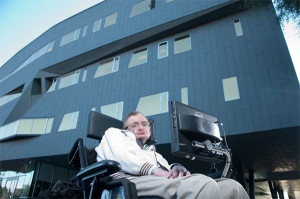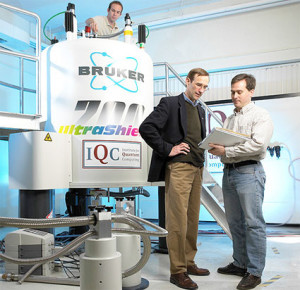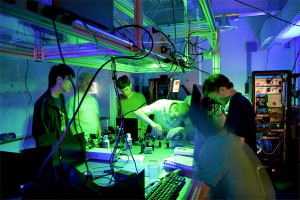The ‘smart city’ initiatives continue to fascinate. During the summer, Toronto’s efforts were described in a June 24, 2019 article by Katharine Schwab for Fast Company (Note: Links have been removed),
Today, Google sister company Sidewalk Labs released a draft of its master plan to transform 12 acres on the Toronto waterfront into a smart city. The document details the neighborhood’s buildings, street design, transportation, and digital infrastructure—as well as how the company plans to construct it.
When a leaked copy of the plan popped up online earlier this year, we learned that Sidewalk Labs plans to build the entire development, called Quayside, out of mass timber. But today’s release of the official plan reveals the key to doing so: Sidewalk proposes investing $80 million to build a timber factory and supply chain that would support its fully timber neighborhood. The company says the factory, which would be focused on manufacturing prefabricated building pieces that could then be assembled into fully modular buildings on site, could reduce building time by 35% compared to more traditional building methods.
“We would fund the creation of [a factory] somewhere in the greater Toronto area that we think could play a role in catalyzing a new industry around mass timber,” says Sidewalk Labs CEO and chairman Dan Doctoroff.
However, the funding of the factory is dependent on Sidewalk Labs being able to expand its development plan to the entire riverfront district. .. [emphasis mine].
Here’s where I think it gets very interesting,
Sidewalk proposes sourcing spruce and fir trees from the forests in Ontario, Quebec, and British Columbia. While Canada has 40% of the world’s sustainable forests, Sidewalk claims, the country has few factories that can turn these trees into the building material. That’s why the company proposes starting a factory to process two kinds of mass timber: Cross-laminated timber (CLT) and glulam beams. The latter is meant specifically to bear the weight of the 30-story buildings Sidewalk hopes to build. While Sidewalk says that 84% of the larger district would be handed over for development by local companies, the plan requires that these companies uphold the same sustainability standards when it comes to performance
Sidewalk says companies wouldn’t be required to build with CLT and glulam, but since the company’s reason for building the mass timber factory is that there aren’t many existing manufacturers to meet the needs for a full-scale development, the company’s plan might ultimately push any third-party developers toward using its [Google] factory to source materials. … [emphasis mine]
…
If I understand this rightly, Google wants to expand its plan to Toronto’s entire waterfront to make building a factory to produce the type of wood products Google wants to use in its Quayside development financially feasible (profitable). And somehow, local developers will not be forced to build the sames kinds of structures although Google will be managing the entire waterfront development. Hmmm.
Let’s take a look at one of Google’s other ‘city ventures’.
Louisville, Kentucky
First, Alphabet is the name of Google’s parent company and it was Alphabet that offered the city of Louisville an opportunity for cheap, abundant internet service known as Google Fiber. From a May 6, 2019 article by Alex Correa for the The Edge (Note: Links have been removed),
In 2015, Alphabet chose several cities in Kentucky to host its Google Fiber project. Google Fiber is a service providing broadband internet and IPTV directly to a number of locations, and the initiative in Kentucky … . The tech giant dug up city streets to bury fibre optic cables of their own, touting a new technique that would only require the cables to be a few inches beneath the surface. However, after two years of delays and negotiations after the announcement, Google abandoned the project in Louisville, Kentucky.
Like an unwanted pest in a garden, sign of Google’s presence can be seen and felt in the city streets. Metro Councilman Brandon Coan criticized the state of the city’s infrastructure, pointing out that strands of errant, tar-like sealant, used to cover up the cables, are “everywhere.” Speaking outside of a Louisville coffee shop that ran Google Fiber lines before the departure, he said, “I’m confident that Google and the city are going to negotiate a deal… to restore the roads to as good a condition as they were when they got here. Frankly, I think they owe us more than that.”
Google’s disappearance did more than just damage roads [emphasis mine] in Louisville. Plans for promising projects were abandoned, including transformative economic development that could have provided the population with new jobs and vastly different career opportunities than what was available. Add to that the fact that media coverage of the aborted initiative cast Louisville as the site of a failed experiment, creating an impression of the city as an embarrassment. (Google has since announced plans to reimburse the city $3.84 million over 20 months to help repair the damage to the city’s streets and infrastructure.)
A February 22, 2019 article on CBC (Canadian Broadcasting Corporation) Radio news online offers images of the damaged roadways and a particle transcript of a Day 6 radio show hosted by Brent Bambury,

Google’s Sidewalk Labs is facing increased pushback to its proposal to build a futuristic neighbourhood in Toronto, after leaked documents revealed the company’s plans are more ambitious than the public had realized.
One particular proposal — which would see Sidewalk Labs taking a cut of property taxes in exchange for building a light rail transit line along Toronto’s waterfront — is especially controversial.
The company has developed an impressive list of promises for its proposed neighbourhood, including mobile pre-built buildings and office towers that tailor themselves to occupants’ behaviour.
But Louisville, Kentucky-based business reporter Chris Otts says that when Google companies come to town, it doesn’t always end well.
…
What was the promise Google Fiber made to Louisville back in 2015?
Well, it was just to be included as one of their Fiber cities, which was a pretty serious deal for Louisville at the time. A big coup for the mayor, and his administration had been working for years to get Google to consider adding Louisville to that list.
So if the city was eager, what sorts of accommodations were made for Google to entice them to come to Louisville?
Basically, the city did everything it could from a streamlining red tape perspective to get Google here … in terms of, you know, awarding them a franchise, and allowing them to be in the rights of way with this innovative technique they had for burying their cables here.
And then also, they [the city] passed a policy, which, to be sure, they say is just good policy regardless of Google’s support for it. But it had to do with how new Internet companies like Google can access utility poles to install their networks.And Louisville ended up spending hundreds of thousands of dollars to defend that new policy in court in lawsuits by AT&T and by the traditional cable company here.
…
When Google Fiber starts doing business, they’re offering cheaper high speed Internet access, and they start burying these cables in the ground.
When did things start to go sideways for this project?
I don’t know if I would say ‘almost immediately,’ but certainly the problems were evident fairly quickly.
So they started their work in 2017. If you picture it, [in] the streets you can see on either side there are these seams. They look like little strings … near the end of the streets on both sides. And there are cuts in the street where they buried the cable and they topped it off with this sealant
And fairly early on — within months, I would say, of them doing that — you could see the sealant popping out. The conduit in there [was] visible or exposed. And so it was fairly evident that there were problems with it pretty quickly
Was this the first time that they had used this system and the sealant that you’re describing?
It was the first time, according to them, that they had used such shallow trenches in the streets.
So these are as shallow as two inches below the pavement surface that they’d bury these cables. It’s the ultra-shallow version of this technique.
…
And what explanation did Google Fiber offer for their decision to leave Louisville?
That it was basically a business decision; that they were trying this construction method to see if it was sustainable and they just had too many problems with it.
And as they said directly in their … written statement about this, they decided that instead of doing things right and starting over, which they would have to do essentially to keep providing service in Louisville, that it was the better business decision for them to just pick up and leave.
Toronto’s Sidewalk Labs isn’t Google Fiber — but they’re both owned by Google’s parent company, Alphabet.
If Louisville could give Toronto a piece of advice about welcoming a Google infrastructure project to town, what do you think that advice would be?
The biggest lesson from this is that one day they can be next to you at the press conference saying what a great city you are and how happy they are to … provide new service in your market, and then the next day, with almost no notice, they can say, “You know what? This doesn’t make sense for us anymore. And by the way, see ya. Thanks for having us. Sorry it didn’t work out.”
…
Google’s promises to Toronto
Getting back to Katharine Schwab’s June 24, 2019 fast Company article,
The factory is also key to another of Sidewalk’s promises: Jobs. According to Sidewalk, the factory itself would create 2,500 jobs [emphasis mine] along the entire supply chain over a 20-year period. But even if the Canadian government approves Sidewalk’s plan and commits to building out the entire waterfront district to take advantage of the mass timber factory’s economies of scale, there are other regulatory hurdles to overcome. Right now, the building code in Toronto doesn’t allow for timber buildings over six stories tall. All of Sidewalk’s proposed buildings are over six stories, and many of them go up to 30 stories. Doctoroff said he was optimistic that the company will be able to get regulations changed if the city decides to adopt the plan. There are several examples of timber buildings that are already under construction, with a planned skyscraper in Japan that will be 70 stories.
Sidewalk’s proposal is the result of 18 months of planning, which involved getting feedback from community members and prototyping elements like a building raincoat that the company hopes to include in the final development. It has come under fire from privacy advocates in particular, and the Canadian government is currently facing a lawsuit from a civil liberties group over its decision to allow a corporation to propose public privacy governance standards.
Now that the company has released the plan, it will be up to the Canadian government to decide whether to move forward. And the mass timber factory, in particular, will be dependent on the government adopting Sidewalk’s plan wholesale, far beyond the Quayside development—a reminder that Sidewalk is a corporation that’s here to make money, dangling investment dollars in front of the government to incentivize it to embrace Sidewalk as the developer for the entire area.
A few thoughts
Those folks in Louisville made a lot of accommodations for Google only to have the company abandon them. They will get some money in compensation, finally, but it doesn’t make up for the lost jobs and the national, if not international, loss of face.
I would think that should things go wrong, Google would do exactly the same thing to Toronto. As for the $80M promise, here’s exactly how it’s phrased in the June 24, 2019 Sidewalk Labs news release,
… Together with local partners, Sidewalk proposes to invest up to $80 million in a mass timber factory in Ontario to jumpstart this emerging industry.
So, Alphabet/Google/Sidewalk has proposed up to an $80M investment—with local partners. I wonder how much this factory is supposed to cost and what kinds of accommodations Alphabet/Google/Sidewalk will demand. Possibilities include policy changes, changes in municipal bylaws, and government money. In other words, Canadian taxpayers could end up footing part of the bill and/or local developers could be required to cover and outsize percentage of the costs for the factory as they jockey for the opportunity to develop part of Toronto’s waterfront.
Other than Louisville, what’s the company’s track record with regard to its partnerships with cities and municipalities? I Haven’t found any success stories in my admittedly brief search. Unusually, the company doesn’t seem to be promoting any of its successful city partnerships.
Smart city
While my focus has been on the company’s failure with Louisville and the possible dangers inherent to Toronto in a partnership with this company, it shouldn’t be forgotten that all of this development is in the name of a ‘smart’ city and that means data-driven. My March 28, 2018 posting features some of the issues with the technology, 5G, that will be needed to make cities ‘smart’. There’s also my March 20, 2018 posting (scroll down about 30% of the way) which looks at ‘smart’ cities in Canada with a special emphasis on Vancouver.
You may want to check out David Skok’s February 15, 2019 Maclean’s article (Cracks in the Sidewalk) for a Torontonian’s perspective.
Should you wish to do some delving yourself, there’s Sidewalk Labs website here and a June 24, 2019 article by Matt McFarland for CNN detailing some of the latest news about the backlash in Toronto concerning Sidewalk Labs.
A September 2019 update
Waterfront Toronto’s Digital Strategy Advisory Panel (DSAP) submitted a report to Google in August 2019 which was subsequently published as of September 10, 2019. To sum it up, the panel was not impressed with Google’s June 2019 draft master plan. From a September 11, 2019 news item on the Guardian (Note: Links have been removed),
A controversial smart city development in Canada has hit another roadblock after an oversight panel called key aspects of the proposal “irrelevant”, “unnecessary” and “frustratingly abstract” in a new report.
The project on Toronto’s waterfront, dubbed Quayside, is a partnership between the city and Google’s sister company Sidewalk Labs. It promises “raincoats” for buildings, autonomous vehicles and cutting-edge wood-frame towers, but has faced numerous criticisms in recent months.
…
A September 11, 2019 article by Ian Bick of Canadian Press published on the CBC (Canadian Broadcasting Corporation) website offers more detail,
…
Preliminary commentary from Waterfront Toronto’s digital strategy advisory panel (DSAP) released Tuesday said the plan from Google’s sister company Sidewalk is “frustratingly abstract” and that some of the innovations proposed were “irrelevant or unnecessary.”
“The document is somewhat unwieldy and repetitive, spreads discussions of topics across multiple volumes, and is overly focused on the ‘what’ rather than the ‘how,’ ” said the report on the panel’s comments.
Some on the 15-member panel, an arm’s-length body that gives expert advice to Waterfront Toronto, have also found the scope of the proposal to be unclear or “concerning.”
The report says that some members also felt the official Sidewalk plan did not appear to put the citizen at the centre of the design process for digital innovations, and raised issues with the way Sidewalk has proposed to manage data that is generated from the neighbourhood.
The panel’s early report is not official commentary from Waterfront Toronto, the multi-government body that is overseeing the Quayside development, but is meant to indicate areas that needs improvement.
The panel, chaired by University of Ottawa law professor Michael Geist, includes executives, professors, and other experts on technology, privacy, and innovation.
Sidewalk Labs spokeswoman Keerthana Rang said the company appreciates the feedback and already intends to release more details in October on the digital innovations it hopes to implement at Quayside.
…
I haven’t been able to find the response to DSAP’s September 2019 critique but I did find this Toronto Sidewalk Labs report, Responsible Data Use Assessment Summary :Overview of Collab dated October 16, 2019. Of course, there’s still another 10 days before October 2019 is past.
 History has repeatedly demonstrated the power of research in physics to transform society. As a student of history and a believer in the power of physics, Mike Lazaridis set out in 2000 to make real his bold vision to establish the Region of Waterloo as a world leading centre for physics research. That is, a place where the best researchers in the world would come to do cutting-edge research and to collaborate with each other and in so doing, achieve transformative discoveries that would lead to the commercialization of breakthrough technologies.
History has repeatedly demonstrated the power of research in physics to transform society. As a student of history and a believer in the power of physics, Mike Lazaridis set out in 2000 to make real his bold vision to establish the Region of Waterloo as a world leading centre for physics research. That is, a place where the best researchers in the world would come to do cutting-edge research and to collaborate with each other and in so doing, achieve transformative discoveries that would lead to the commercialization of breakthrough technologies. Perimeter is located in a Governor-General award winning designed building in Waterloo. Success in recruiting and resulting space requirements led to an expansion of the Perimeter facility. A uniquely designed addition, which has been described as space-ship-like, was opened in 2011 as the
Perimeter is located in a Governor-General award winning designed building in Waterloo. Success in recruiting and resulting space requirements led to an expansion of the Perimeter facility. A uniquely designed addition, which has been described as space-ship-like, was opened in 2011 as the  Mike and Doug Fregin have been close friends since grade 5. They are also co-founders of BlackBerry (formerly Research In Motion Limited). Doug shares Mike’s passion for physics and supported Mike’s efforts at the Perimeter Institute with an initial gift of $10 million. Since that time Doug has donated a total of $30 million to Perimeter Institute. Separately, Doug helped establish the
Mike and Doug Fregin have been close friends since grade 5. They are also co-founders of BlackBerry (formerly Research In Motion Limited). Doug shares Mike’s passion for physics and supported Mike’s efforts at the Perimeter Institute with an initial gift of $10 million. Since that time Doug has donated a total of $30 million to Perimeter Institute. Separately, Doug helped establish the  For many years, theorists have been able to demonstrate the transformative powers of quantum mechanics on paper. That said, converting these theories to experimentally demonstrable discoveries has, putting it mildly, been a challenge. Many naysayers have suggested that achieving these discoveries was not possible and even the believers suggested that it could likely take decades to achieve these discoveries. Recently, a buzz has been developing globally as experimentalists have been able to achieve demonstrable success with respect to Quantum Information based discoveries. Local experimentalists are very much playing a leading role in this regard. It is believed by many that breakthrough discoveries that will lead to commercialization opportunities may be achieved in the next few years and certainly within the next decade.
For many years, theorists have been able to demonstrate the transformative powers of quantum mechanics on paper. That said, converting these theories to experimentally demonstrable discoveries has, putting it mildly, been a challenge. Many naysayers have suggested that achieving these discoveries was not possible and even the believers suggested that it could likely take decades to achieve these discoveries. Recently, a buzz has been developing globally as experimentalists have been able to achieve demonstrable success with respect to Quantum Information based discoveries. Local experimentalists are very much playing a leading role in this regard. It is believed by many that breakthrough discoveries that will lead to commercialization opportunities may be achieved in the next few years and certainly within the next decade.